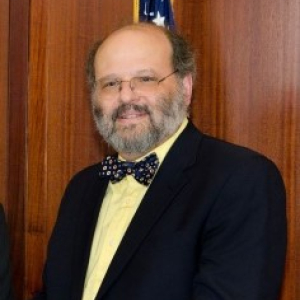
Sidney W. Whiteheart, PhD
Connect
859-257-4882whitehe@uky.edu
Positions
- Professor
College Unit(s)
Other Affiliation(s)
- CVRC - Core Faculty
- MD/PhD Program Internal Advisory Committee
- MD/PhD Program Mentor
Biography and Education
Education
B.S. Emory University
Ph.D. The Johns Hopkins University School of Medicine
Dr. Sidney (Wally) Whiteheart, professor in the department of molecular and cellular biochemistry, joined the College of Medicine in 1994. He has been an active member of the college community, serving as chair of the faculty council, a member of the strategic plan executive oversight committee, and interim chair of his department. He has mentored more than 50 trainees and is an active researcher focusing on platelet function and cell biology, with two R01 grants and a VA Merit grant. As the director, he will provide oversight for the program; ensure appropriate infrastructure and integration with the Integrated Biomedical Sciences program, oversee the graduate mentor/advisory committees and the co-directors, and cultivate and maintain an open-door culture for the MD/PhD students.
Research
∂ Molecular Mechanisms of Platelet Secretion
∂ Role of ADP Ribosylation Factor 6 (Arf6) in Platelet Activation
∂ Structure/Function Analysis of the General Fusion Protein: NSF
Platelets are essential to maintaining a pressurized vasculature. The platelet's role is to sense vascular damage and to promote clot formation and tissue repair. Secretion from their three granular stores is essential to hemostasis and our goal is to understand the mechanisms of this secretory process. In the resting platelet, hemostatic and tissue repair-inducing components are stored in three types of membrane bound granules. Upon stimulation, these granules are targeted to specific sites on the platelet's plasma membrane where the granule membranes fuse with the plasma membrane thus releasing the granule contents. Our studies are designed to determine what platelet proteins are involved in the steps leading to secretion. We are specifically interested in how the activities of these proteins are controlled by the signaling cascades that are initiated by external events such as vascular damage.
As part of these studies, we have also focused on a Ras-related ,small GTP binding protein called ADP Ribosylation Factors 6 (Arf6). In our groundbreaking studies, we have shown that Arf6 is critical for the platelet cytoskeletal rearrangements needed for aggregation and clot formation. This work is particularly exciting since it places Arf6 as a central regulator of many of the steps that occur in activated platelets.
NSF: All membrane trafficking events are mediated by integral membrane proteins (SNAREs) that span the two fusing bilayers and promote membrane fusion. Once fusion is accomplished, the complex formed by the spent SNAREs must be disassembled for recycling. Our group focuses on the enzyme that disassembles all cellular SNARE complexes and is thus essential to all membrane trafficking events. The N-ethylmaleimide Sensitive Fusion protein (NSF) is a homo-hexamer whose subunits contain three domains (an amino and two ATP binding domains). It is our hypothesis that each domain of NSF is responsible for a distinct aspect of the SNARE recycling process. Our laboratory uses structure-based mutagenesis together with a battery of assays to determine what parts of the NSF hexamer are responsible for the various processes required to disassemble SNARE complexes.